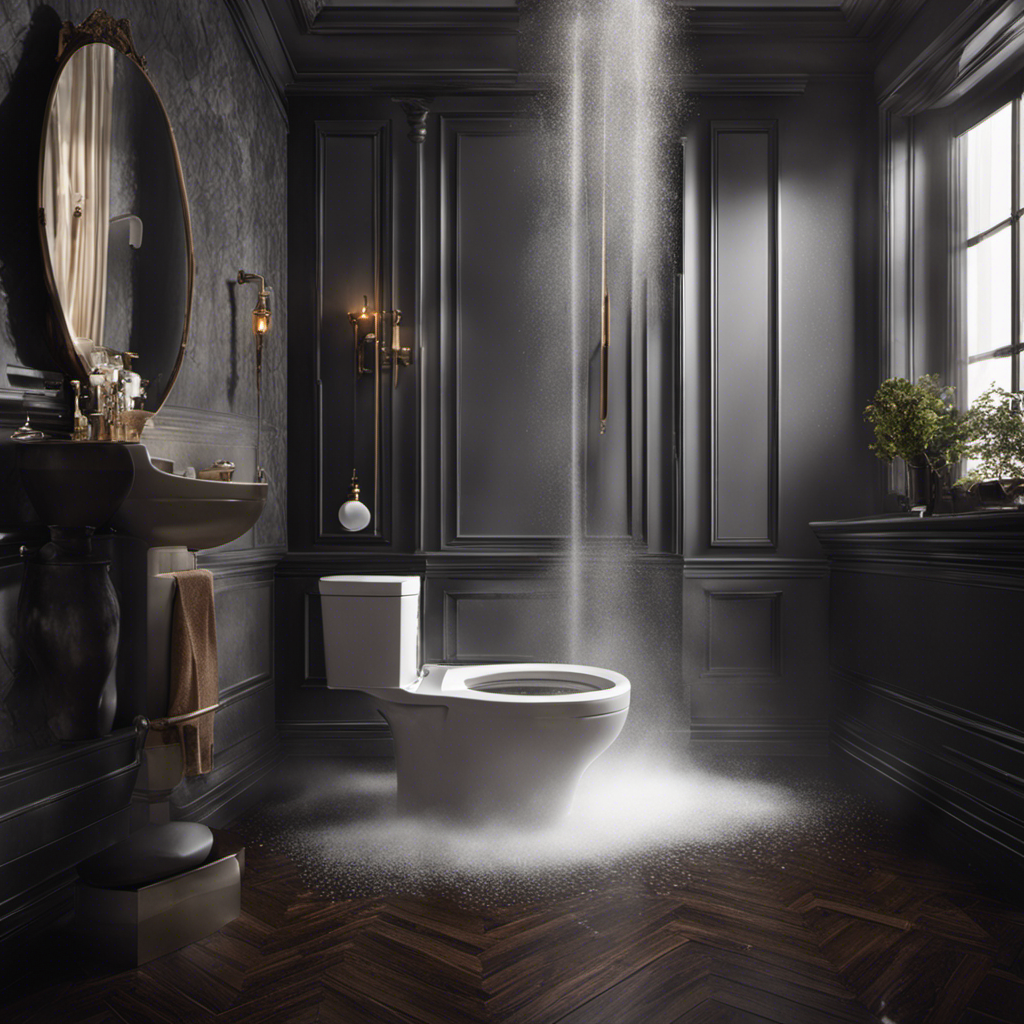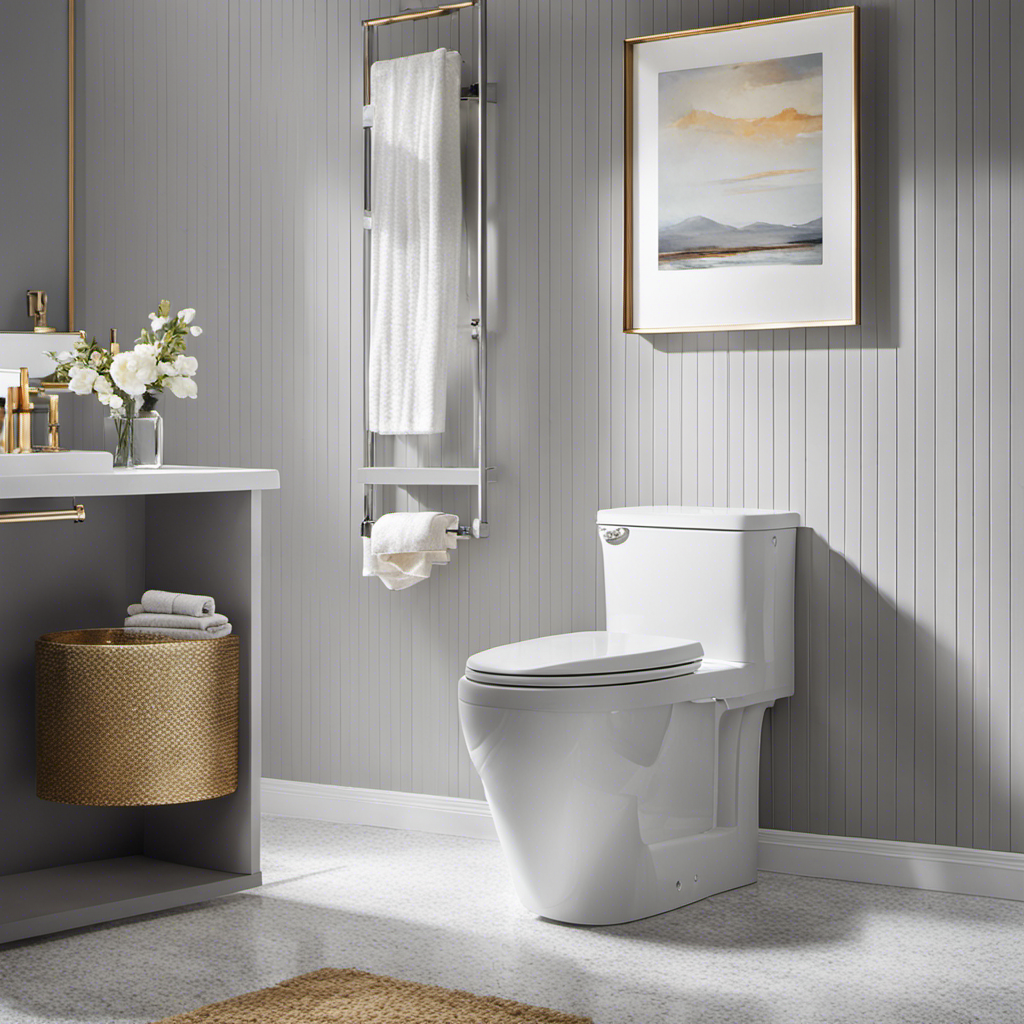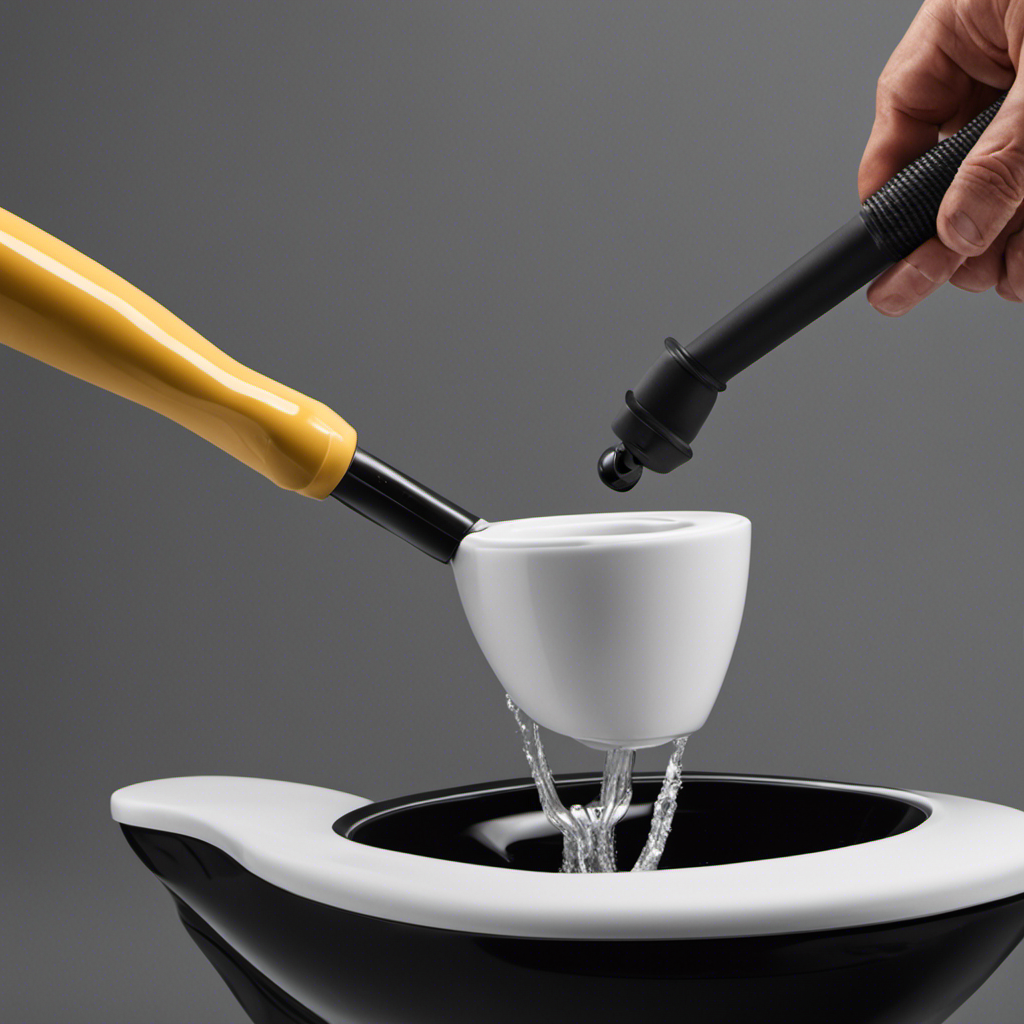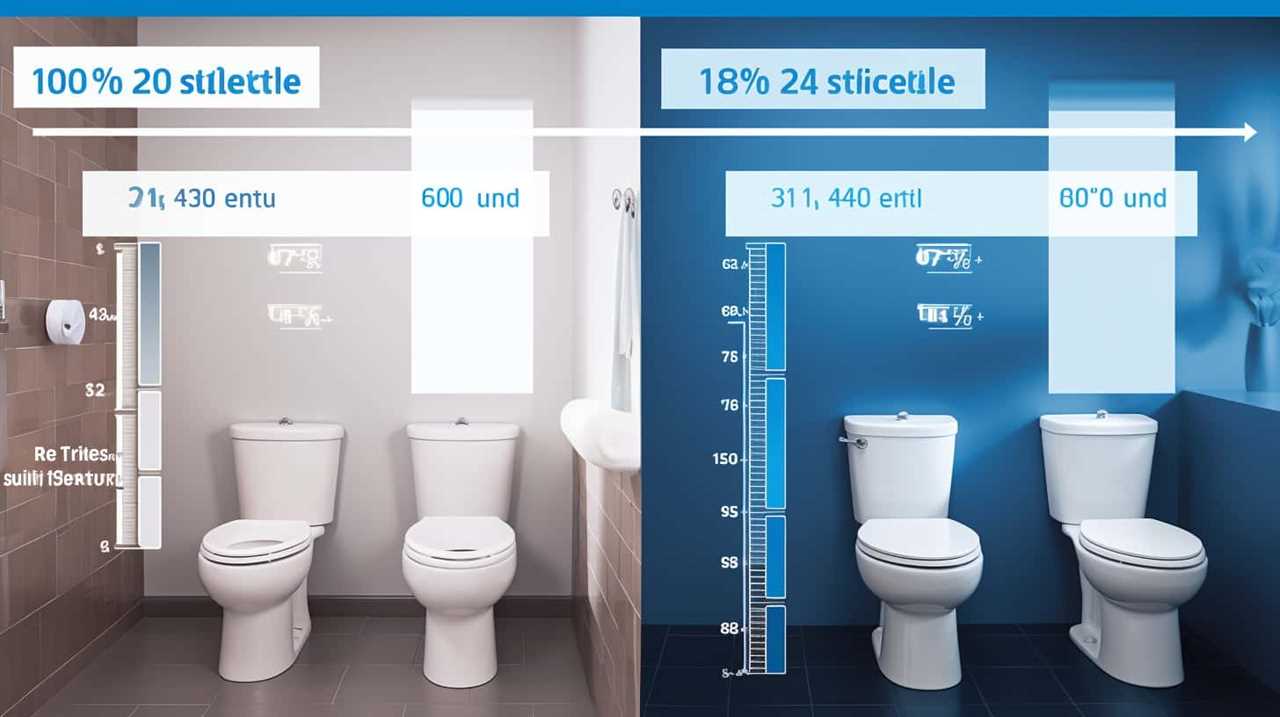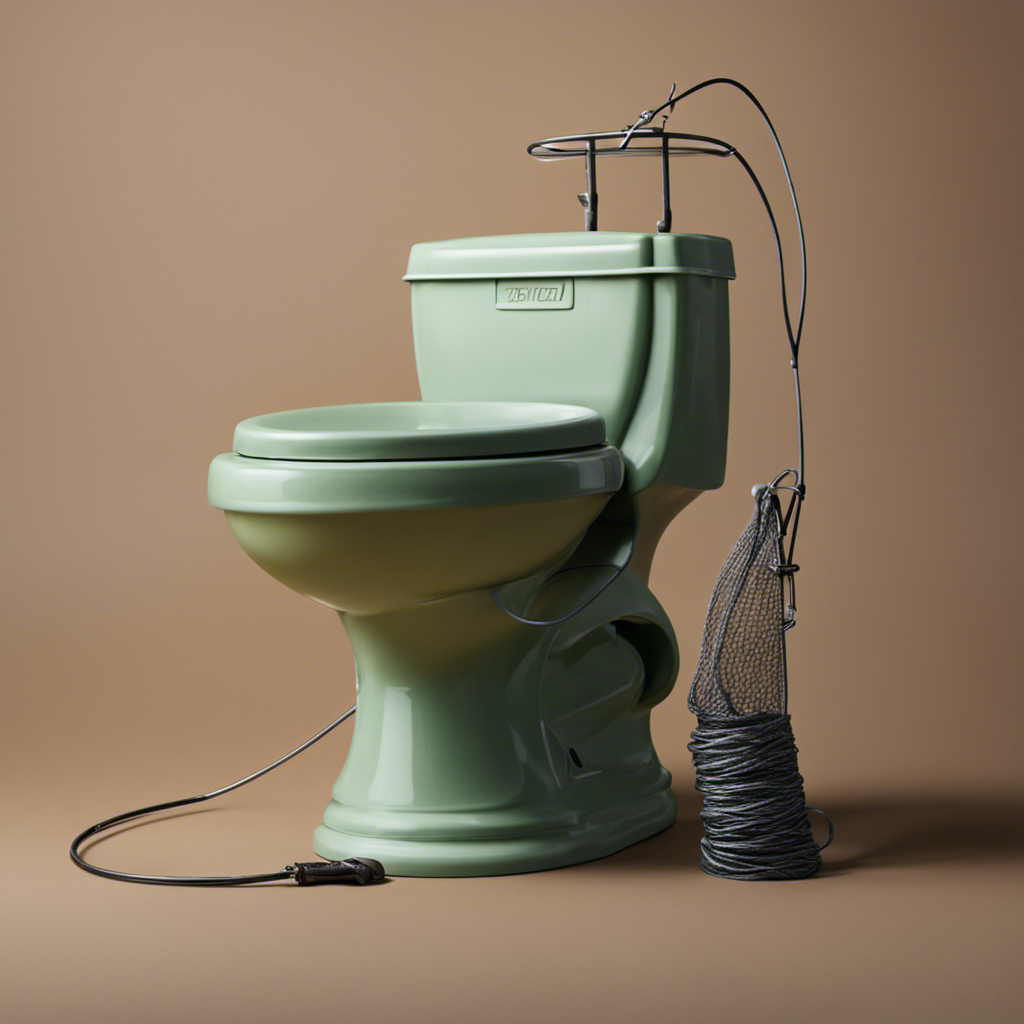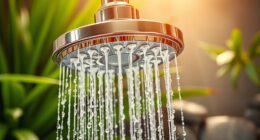Have you ever wondered how long toilet plume lingers in the air after flushing?
In this article, I will explore the duration of toilet plume particles in the air and the factors that influence their persistence.
Through research findings, we will uncover the potential health risks associated with lingering toilet plume.
Furthermore, I will discuss techniques to minimize toilet plume contamination in the air.
Get ready to delve into the scientific realm of toilet plume and its impact on our environment.
Key Takeaways
- Toilet plume particles can remain in the air for several minutes after flushing.
- The duration of toilet plume particles in the air depends on factors such as airflow and ventilation.
- Well-ventilated areas with high air exchange rates disperse plume particles more quickly.
- In poorly ventilated spaces, plume particles may linger in the air for longer periods.
Airborne Transmission of Toilet Plume Particles
You might be wondering how long toilet plume particles stay in the air and if they can be transmitted to others. Well, let me shed some light on this matter.
When a toilet is flushed, it creates a phenomenon known as toilet plume, where particles are released into the surrounding air. These particles can contain bacteria, viruses, and other microorganisms. Studies have shown that toilet plume particles can remain in the air for several minutes, depending on factors such as airflow and ventilation.
This poses a potential risk to air quality, especially in enclosed spaces. Furthermore, these airborne particles can potentially lead to respiratory infections if they are inhaled by individuals in close proximity.
Therefore, it is crucial to ensure proper ventilation and hygiene practices to minimize the spread of toilet plume particles and maintain a healthy environment.
Factors Affecting the Duration of Toilet Plume in the Air
One factor that affects how much time toilet plume remains suspended in the atmosphere is the level of ventilation in the environment. Here are four important considerations regarding toilet plume dispersion and containment:
-
Ventilation rate: Higher ventilation rates can help disperse and dilute the toilet plume more quickly, reducing its persistence in the air.
-
Air exchange rate: A higher rate of air exchange can effectively remove the plume particles from the environment, minimizing their presence.
-
Airflow direction: Proper airflow direction can help direct the plume particles away from occupied areas, preventing their spread.
-
Filtration systems: Efficient air filtration systems can capture and remove the plume particles, contributing to their containment.
Understanding these factors is crucial in mitigating the potential risks associated with toilet plume dispersion.
Now, let’s delve into the research findings on toilet plume persistence.
Research Findings on Toilet Plume Persistence
Based on recent research, it’s been found that the duration of toilet plume particles in the atmosphere can vary depending on factors such as ventilation and air exchange rates.
When a toilet is flushed, it releases a plume of tiny water droplets and aerosolized particles into the air. These particles can contain various microorganisms, including bacteria and viruses. The spread and dispersal of these particles is commonly referred to as toilet plume spread or toilet plume dispersal.
The length of time that these particles remain suspended in the air is influenced by the surrounding conditions. In well-ventilated areas with high air exchange rates, the toilet plume particles tend to disperse more quickly and settle onto surfaces. However, in poorly ventilated spaces, the particles may linger in the air for longer periods, increasing the risk of exposure to harmful microorganisms.
Therefore, it is crucial to consider ventilation and air exchange rates when assessing the persistence of toilet plume particles in the atmosphere.
Health Risks Associated With Lingering Toilet Plume
In poorly ventilated spaces, the lingering toilet plume particles can increase the risk of exposure to harmful microorganisms. This is particularly concerning in the context of the COVID-19 pandemic, as studies have shown that the SARS-CoV-2 virus can be present in feces and could potentially be released into the air during flushing.
Here are some key points to consider regarding the health risks associated with lingering toilet plume:
-
Transmission of respiratory infections: Toilet plume can contain various respiratory pathogens, including bacteria and viruses, which can be inhaled and potentially lead to respiratory infections.
-
Increased risk in shared spaces: In areas with poor ventilation, such as public restrooms or crowded households, the concentration of airborne microorganisms from toilet plume can be higher, increasing the risk of transmission.
-
Importance of proper hygiene practices: Regular handwashing and proper toilet hygiene, including closing the lid before flushing, can help minimize the spread of microorganisms from toilet plume.
-
Ventilation and air purification: Improving ventilation and using air purifiers with HEPA filters can help reduce the concentration of airborne microorganisms, mitigating the potential health risks associated with lingering toilet plume.
It is crucial to take these factors into consideration to create safer environments and minimize the risk of respiratory infections linked to toilet plume exposure.
Techniques to Minimize Toilet Plume Contamination in the Air
To minimize the contamination of the air, you can try closing the lid before flushing and using proper ventilation techniques.
Toilet plume prevention is crucial to maintain good indoor air quality. When you flush the toilet, tiny droplets containing bacteria and viruses can be released into the air, creating a potential health risk. Closing the lid before flushing helps to prevent these droplets from escaping.
Additionally, using proper ventilation techniques, such as turning on the exhaust fan or opening a window, can help to remove any airborne particles and improve air quality.
To further enhance air purification, consider using air purifiers equipped with HEPA filters, which can capture and remove contaminants from the air.
Conclusion
In conclusion, the lingering presence of toilet plume in the air is a matter of concern. Like a mysterious mist, it lingers and spreads its potentially harmful particles. Research has shown that various factors, such as flushing power and ventilation, affect the duration of its persistence.
The health risks associated with breathing in these particles cannot be ignored. However, by implementing proper hygiene practices and using techniques like closing the lid before flushing, we can minimize the contamination and protect ourselves from the invisible threat that lurks in the air.
